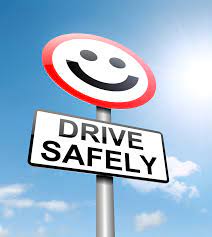Seven Safe-Driving Technologies That Can Help Prevent Car Accidents
Technology has been exponentially growing and integrating with all aspects of our lives, our phones have become smartphones, our homes have become smart homes and our cars have become showered with new safe driving technologies to keep us safer on the road.
-
Automatic Emergency Breaking Systems
-
-
- Braking systems have become an essential aspect of our cars. Sometimes humans aren’t as reactive as we should be and this new braking system brakes for us when the car senses we are too close to another car which helps prevent future car accidents. For example, the newly developed Crash Imminent Breaking (CIB) systems will activate if a crash occurs on the road. This system is strong enough to stop the car sooner than a standard driver. Dynamic Breaking (DB) systems can also assist the driver in slowing down. However, these DB systems are less powerful than their CIB counterparts. Regardless of which technology you choose, it’ll be more proactive toward crashes.
-
-
Blind Spot Detection Technology
-
-
- Traditionally, blind spots were just another part of knowing how to drive a car; driving schools would repetitively teach when to check them. However, this practice often fades over time as the driver becomes more comfortable, older, and more experienced. There is technology out there to help. Blind Spot Detection (BSD) is primarily standard for new cars. It will alert you to there being objects in your blind spots. Conversely, some BSD systems only trigger if a turning signal is active.
-
-
Lane Departure Warning System
-
-
- Len Departure Warning Systems are a relatively new technology, but most new cars have them. This technology works by utilizing the various cameras around the car and its body. The cameras use software to keep track of the vehicle. An alert will be triggered when the car drives outside the lane boundaries. The signal encourages drivers to return their eyes to the road, adjust course, or avoid others. The most advanced of this technology may take control of the car for you, keeping it in the lane. Additionally, some versions of this technology require a signal to be active before the alert stops chiming.
-
-
Automated Steering System
-
-
- One of the most attractive elements of the Tesla and other modern cars is their ability to automate steering. This technology has excellent applications, such as driverless transport vehicles, shipment vehicles, and defensive maneuvers. Often, these automated steering systems can take control of the car in times of need. While remaining in the correct lane, things like people or objects in the road will trigger defensive actions. There is another side to this technology that experts should mention. Due to the car taking control, it is still possible to crash. You may still be held accountable for the vehicle’s autopilot, even when a car accident isn’t your fault. There is good news, however; if the crash occurred because of an error with the auto technology, the driver could receive compensation from the vehicle manufacturer.
-
-
Adaptive Headlights
-
-
- There is more to headlights than high beams and low beams. The type of car someone drives will usually either have auto-starting or manual lights. However, there are other options too these days. Adaptive Headlights (AH) are a relatively new technology compared to something like LDW. Headlights are usually not the first thing people think of when they think of “how to prevent car accidents.” But they should be. A driver’s ability to see the road and its obstacles seem essential to driving. AHs, assist drivers not by automatically switching on the headlights but by triggering the headlights when the wheel is turned. This motion makes the drive not only safer but also more cost-effective.
-
-
Traction Control System
-
-
- The direct descendant of old ABS technology, Traction Control Systems (TCS) are necessary anywhere a vehicle may drive over wet roads. The accidents caused by wet or slippery roads can be devastating—mainly when winter pile-ups can occur. We should note that ABS and TCS work differently. The ABS operates by preventing the slippage of the brakes on wet tires. TCS aims to reduce the traction in the wheel during a slide—this assists in mitigating any instability that a driver may have while driving. Additionally, TCS helps prevent the vehicle’s wheels from spinning wildly during acceleration over wet roads. Thus, these driving systems aren’t only for keeping control in bad weather but also to keep you safer on the road.
-
-
Electronic Stability Control Technology
-
- The child of Anti-Breaking Systems (ABS) and prioritization, Electronic Stability Control(ESC) technology is a necessary aspect of modern cars. ABS works by keeping control of a car’s wheels during a slide or hydroplaning. ESC works by diverting the car’s and engine’s power into the brakes. Since its release, ESC has reduced 50% of the total rollovers and car crashes on the road in hazardous conditions. The ESC is excellent for stopping a slide, hydroplane, or loss of control altogether. More than that, it’s also considered one of the most necessary aspects of all newer vehicles.
Hopefully, you now know and understand some of the new safe driving technologies on the road. Knowing a little bit about some of the technology other drivers have can help everyone drive more defensively.
If an accident does happen, knowing what to do after a car accident is essential—the first step is taking pictures and calling the authorities.









